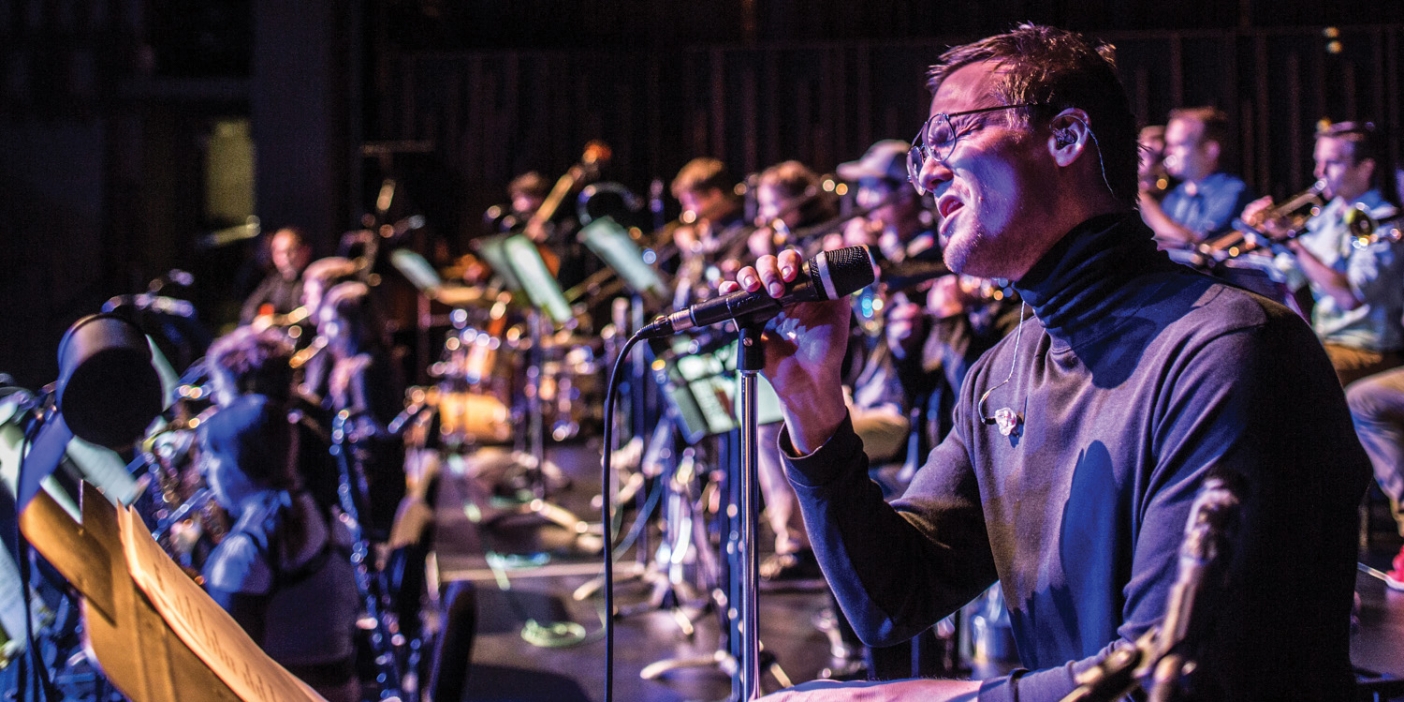
Dressed in jewel and earth tones, shoes removed as a symbol of reverence, faces ranging from teary to weary-but-determined, all mourning—they get to work at the task at hand: caring for the body of the man they had thought would be a Savior.
For his family and followers, “at this point it seems like, ‘Okay, He gave it His best, but it didn’t work. There goes our shot too,’” says Brian T. Kershisnik (BFA ’88), the Utah artist who painted Descent from the Cross, currently on display in the Joseph F. Smith Building’s fourth-floor east alcove. “‘But He’s our hero, He did His best, we love Him. All we can do now is tend His body.’”
Across from Descent hangs a reproduction of Kershisnik’s 2006 Nativity, a companion piece that depicts a crowd of angels young and old witnessing the birth of Christ. The angels—recurring characters in many of Kershisnik’s overtly religious paintings—watch with intrigue at Christ’s birth. At the scene of His death, they join in the mourning: many are crying, one has a hand to his forehead with eyes closed, another covers his mouth in disbelief. Two extend hands to help in the mortal work of lowering the beam to which Christ’s hands are nailed.
John R. Rosenberg (BA ’79, MA ’81), a Spanish and Portuguese professor and former dean of the College of Humanities, notes that the piece includes a number of traditional elements from centuries of past descent paintings: the woman at the foot of Christ, onlookers’ bare feet, such emblems of the cross as nails and a crowbar. And the angels.
“It’s the obligation of a disciple to work those tragedies into things that shape us into something good . . .[and] to say, ‘No, I will turn this into more life.” —Brian Kershisnik
But it’s Kershisnik’s departure from tradition, says Rosenberg, that make his piece especially compelling. One such departure? Here “the veil is punctured,” Rosenberg says. “The angels aren’t silent witnesses; they are actually in a mode of ministration.”
The explanation behind the angels’ emotions as they minister and mourn is up for interpretation. “I’m not sure for whom the angels are mourning,” Rosenberg says, “if they’re mourning for the dead Christ or for the believers who don’t yet know the next chapter.”
Kershisnik has an idea: “I don’t have any authority over what any of those angels are thinking, but my impression is they also don’t know how this is going to work out. They have more of a view than these mortals, but . . . they’re upset too.”
The moment—one of sadness and uncertainty—resonated with Kershisnik and is one he believes most people can connect with in some way. Christ’s followers “were confused, just like you are in the midst of your tragedy,” he says. “They were knocked on their backs, thinking, ‘What? How can there ever be happiness after this?’ . . . [But] it’s the obligation of a disciple to work those tragedies into things that shape us into something good, because when they happen, they threaten death and despair. The obligation of a disciple is to say, ‘No, I will turn this into more life.’”











